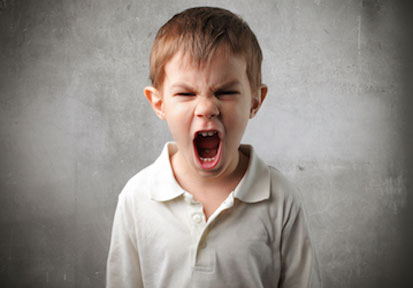Everyone experiences anger, even kids. It’s a natural emotion that parents can help kids learn to appropriately manage. However, anger becomes problematic when children get physical. And when anger in kids is met with anger in parents, it can lead to an all-out tantrum in which no one wins. Still, if your children learn to cope well with anger while they’re young, they can carry that skill into adulthood. Try these 5 steps to help your kids learn how to get ahead of their anger.
Step #1: Help your kids recognize their anger.
Kids need help developing their vocabulary to express how they’re feeling. Teach your kids to think of their emotions as temperatures on a thermometer: When their anger builds, the thermometer reads higher. Kids can learn to reduce their anger before the temperature rises too high, but first they must be able to recognize it. This involves noticing changes in their bodies such as increased heart rate, flushed cheeks, jittery legs, or clenched fists. Point out these things to help your kids link their feelings of anger to those changes in their bodies. And once things calm down, ask them what they’re feeling and how they know, so you can help them figure out how different emotions impact their bodies.
Step #2: Teach your kids coping skills.
To help your kids actively calm down when they begin to get angry, teach them coping skills such as taking deep breaths, counting slowly, or repeating a calming phrase such as, “Anger can’t get the best of me.” Other useful strategies include identifying your child’s anger triggers (specific events or situations that spark anger) and using emotion-coaching tactics. For younger kids, distracting them away from their anger triggers sometimes works. For older kids, help them change their thinking patterns to positive thoughts about themselves or their situations. You’ll probably have to try different approaches to figure out what works best for your child.
Step #3: Encourage kids to take “cool-down time.”
When kids become emotionally overwhelmed, it’s hard for them to think clearly or take in new information. Teach your kids it’s okay to ask for a time-out. This isn’t a punishment. Rather, it’s self-imposed time to cool down that kids can choose to take when they notice they need it. During a time-out, they should separate themselves from the situation and use the coping skills discussed in Step #2. Work with your kids to come up with a phrase to use such as, “I need some me time” or “It’s time-out time!”
Step #4: When they’re calm, help your kids think about what sparked their anger.
Coach your kids to help them understand that after taking a time-out and calming down, it’s important to figure out what happened. Signs that he or she is calming down include less fidgeting, sitting peacefully, playing with toys as usual, or being able to think about things other than what was making her or him angry. This might mean continuing a conversation or finishing an action (such as putting away toys). Praise your child for managing anger well, and ease him or her back into the discussion or task.
Step #5: Finish on a positive note.
Finally, it’s important to rebound and interact with your kids in a positive way after an angry outburst. Kids need to know their parents still care for them, especially after getting angry and maybe misbehaving. It’s possible your child’s outburst triggered your own anger. This can make kids worry they damaged their relationship with you, so tell them to be proud they were able to control their anger so well. If needed, encourage an apology for any wrongdoing that occurred, since taking responsibility for one’s actions is also an important skill to learn. And end the exchange with a hug and kiss to help your kids feel loved and accepted.
